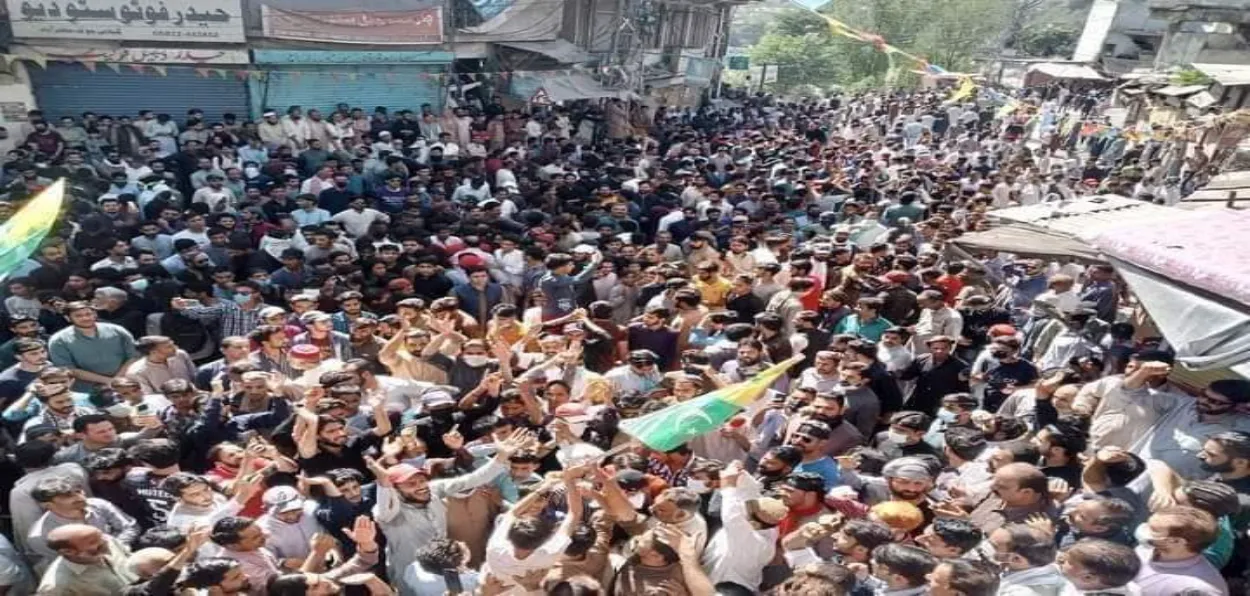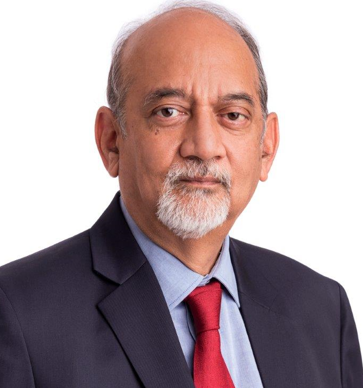
 D. P. Srivastava
D. P. Srivastava
The Pakistan-occupied Kashmir (POK) has been in the grip of public protests against the Pakistani government for a year. The people are protesting against the worsening economic situation. The situation resulted in violent clashes recently in which a police officer was killed and 90 people were injured.
The immediate trigger is the rise of electricity and wheat flour prices. However, there is a long history of exploitation of the region, which is sometimes dubbed as the ‘last colony’ in Pakistani media. While Pakistan has created a facade of ‘Azadi’, real power is wielded by Islamabad.
Pakistan's government has announced a Rs. 23 billion subsidy for POK. With an exchange rate of Rs. 279.49 = 1 US Dollar, this works out to a paltry $ 82.43 million. Pakistan has devised a system in which 80% of taxes raised from the territory is given to POK as a Federal grant, while Islamabad retains the balance of 20%. This is an exploitative arrangement where essentially Pakistan has appropriated 1/5th of the taxes raised locally for its ends in the name of administrative expenses. Federal ‘grant’ does not come from Pakistan’s resources.
In response to the recent agitation, Pakistan has also announced a revision of the electricity tariff for the people of POK. The revised rate charged to POK consumers ranges from Rs. 3 per unit to Rs. 6 per unit depending upon the level of consumption. This has to be contrasted with the price paid by Pakistan for the unit of electricity drawn from the Mangla dam in POK. Under a convoluted system devised by Islamabad, Pakistan pays 15 Paisa per unit. In effect, the POK consumer will pay 20 to 40 times the price it receives from Pakistan even under the revised rates. Ironically, the electricity it uses is deemed to be ‘imported’ from Pakistan even though it is generated from its waters within its territory.
The story does not end here. Pakistan pays Rs. 1.10 per unit as hydro-power royalty for electricity produced in Punjab or Khyber Pakhtunkhwa. POK does not get hydro-power royalty. Rs. 15 Paisa per unit it receives are ‘water usage’ charges. Nomenclature would not have mattered if there was parity in rates paid to Pakistani provinces and POK. Payment at a seven times higher rate to its provinces is justified on the ground that under Article 161 of Pakistan’s constitution, hydro-power royalty is only paid to Pakistan’s provinces, while POK is not part of Pakistan. This is a specious argument.
Mangla Dam was constructed in 1967, six years before Pakistan’s present constitution was adopted in 1973. There was enough time to make a financial or constitutional dispensation which gave POK a fair deal. For the first 36 years, indeed no payment was made to POK for its water or electricity. When the payment began in 2003, it was at the artificially depressed rate of 15 paisa per unit mentioned above.
If the original mistake was an inadvertent omission, it could have been rectified subsequently. There have been 26 amendments to Pakistan’s constitution since then, but this anomaly has not been rectified.
Pakistan has maintained the charade that the POK is ‘Azad’ to keep alive the fiction that the final status of Kashmir will be settled in a plebiscite under the UN’s auspices. In effect, it had long ago changed the territorial status quo of the area without a plebiscite. Northern Areas, since re-named as Gilgit-Baltistan, were hived off from POK and brought under Pakistan’s direct administrative control in 1947.
What is called POK today is a mere 15% of the total territory under Pakistan’s illegal control. This charade where the POK is claimed to be a distinct territory, not part of Pakistan, places the people of the POK under a double jeopardy. It remains under Pakistan’s absolute control. But unlike Pakistan’s provinces, it has no say in determining its share in resource allocation.
Though elections have been held in POK since 1975, the elected government and the legislature have no powers. All the real powers - taxation, water, roads, and highways were vested in the Kashmir Council headed by Pakistan’s prime minister. While the Council was relegated to an advisory role in 2018, its powers were not transferred to the elected assembly. Instead, Pakistan has taken over powers over 32 subjects within POK. Any legislation or administrative step on the remaining 22 subjects, also needs Islamabad’s approval.
Since the last elections in POK in 2021, the government in Muzaffarabad has been changed three times. The Niazi government, allied to Imran Khan, was replaced by Tanveer Ilyas soon after the fall of Imran Khan’s government in Islamabad. The change was effected by a motion of no confidence.
In a democracy, it is a normal practice for the opposition to bring such a motion. In this case, the motion was brought by the members of the ruling party while the entire opposition boycotted the proceedings. The whole exercise was coordinated by powers that be in Rawalpindi who wanted to get rid of Imran’s representative in a sensitive territory. Tanweer Ilyas himself has been replaced by Chaudhary Anwar-ul Haq since then.
ALSO READ: Pakistan’s economic crisis is due to military spending and low tax base
It remains to be seen whether the trouble over electricity and ‘Ata’ prices spreads to Gilgit-Baltistan, where the situation is much worse. It is, however, more tightly controlled by the Pakistan military, since CPEC as well as the Indus River enters Pakistan through this territory.
(The author is a former Ambassador and author of Forgotten Kashmir: The Other Side of the Line of Control)
